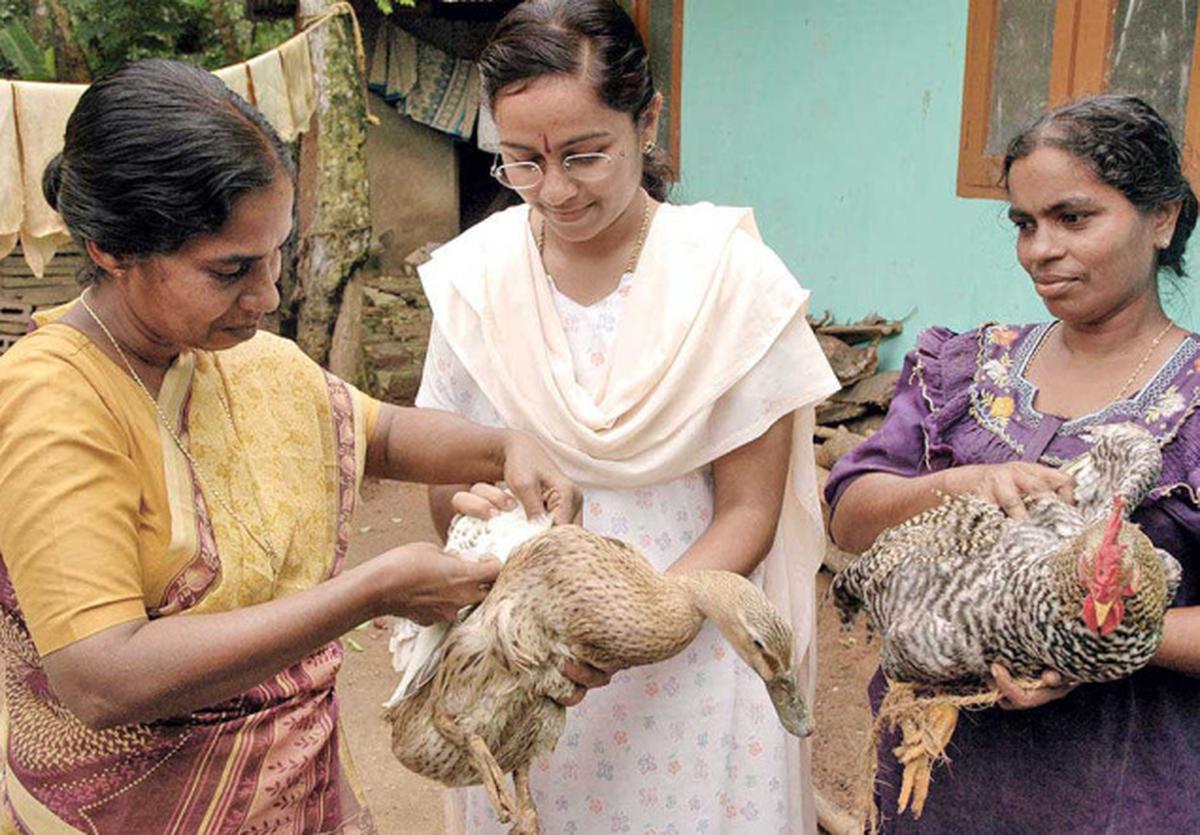Ranikhet Disease in India

- 09 Feb 2025
In News:
Recent outbreaks of suspected Ranikhet disease (Newcastle Disease) have caused the death of approximately 1.5 lakh chickens in poultry farms across Andhra Pradesh (Eluru, Guntur, Prakasam, and the Godavari districts) and Haryana (Barwala and Raipur Rani in Panchkula). These outbreaks have raised alarms about biosecurity measures, especially in regions that are major poultry producers.
About Ranikhet Disease:
- Also known as: Newcastle Disease (ND)
- Causative Agent: Avian avulavirus 1 (also called Avian Paramyxovirus-1 or APMV-1)
- Affected Species: Primarily chickens, but also turkeys, ducks, pigeons, crows, geese, guinea fowls, partridges, doves, and even hedgehogs (suspected reservoirs).
- Nature of Disease: Highly contagious and fatal viral disease.
- Transmission:
- Direct contact with infected bird secretions (especially feces)
- Contaminated feed, water, equipment, clothing, and environment
- ND virus can survive for weeks in cool environments, increasing risk in winter.
Symptoms and Impact:
- In Birds:
- Respiratory issues: Sneezing, gasping
- Nervous symptoms: Droopiness, loss of coordination
- Digestive symptoms: Diarrhea
- Mortality rate: Ranges from 50% to 100%
- Production impact: Drop in egg production and fertility
- In Humans:
- Mild zoonotic effect, primarily conjunctivitis in people handling infected birds or lab samples.
- Usually self-limiting and non-fatal.
Recent Outbreaks and Investigations:
Andhra Pradesh:
- Approximately 1.5 lakh birds have died across multiple districts.
- Suspected cause: Highly virulent strain of Ranikhet Disease.
Haryana (Barwala–Raipur Rani belt):
- This belt houses around 115 poultry farms and is the second-largest poultry producer in Asia.
- Previously affected by bird flu outbreaks in 2006 and 2014.
- Northern Regional Disease Diagnostic Laboratory (NRDDL), Jalandhar collected 40 new samples from affected farms after being unsatisfied with earlier ones.
- Preliminary suspicion points toward Ranikhet Disease; however, cold wave conditions and the presence of older birds (not replaced due to COVID-19 restrictions) may have also contributed.
- The region falls in the path of migratory birds, whose droppings can spread avian flu viruses, complicating disease identification.
Current Challenges:
- Lack of effective treatment: No curative treatment exists. Management relies on preventive vaccination, biosecurity measures, and good poultry housing practices.
- Diagnostic delays: Require reliable sampling and laboratory testing to confirm the cause.
- Climate sensitivity: Poultry are vulnerable to extreme cold, especially if housing and care are inadequate.
- Pandemic aftershocks: COVID-19 disruptions prevented the routine replacement of older birds, increasing vulnerability.
